You need it to jam bullets down a tight bore and out yonder in a blink. But you don’t want too much of it.
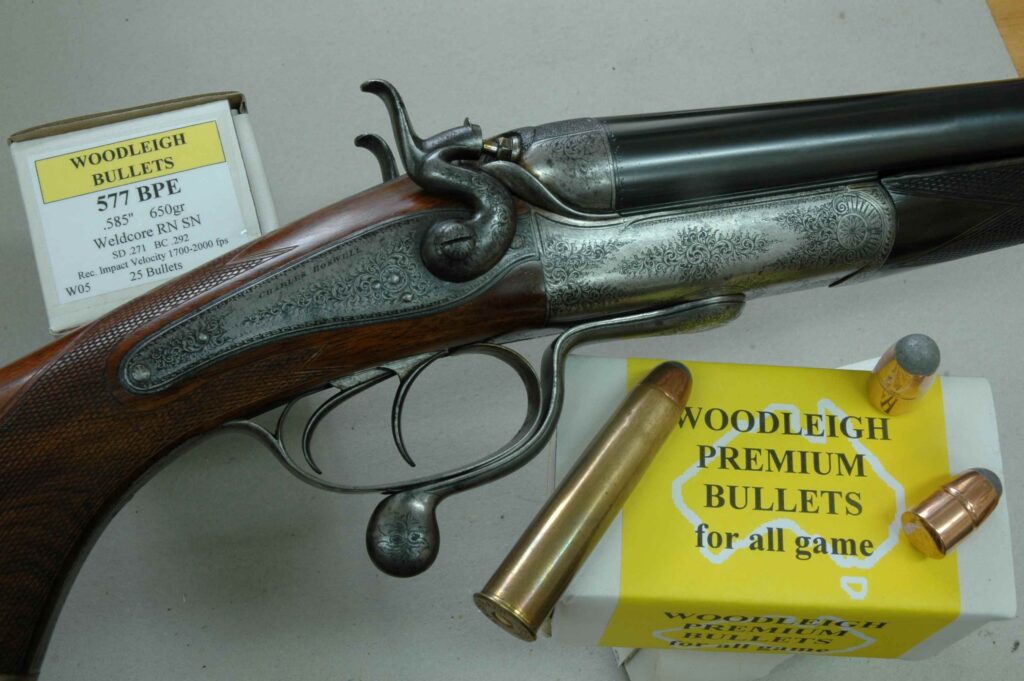
Pressures in black-powder cartridges for rifles like this fine Boswell were held to 20,000 to 30,000 psi
Gunpowder doesn’t explode. It burns. The gas it produces expands quickly to pop the bullet free and send it on its way. The rate at which powder burns matters, and depends on several variables. Case capacity is one. A short, straight case needs fast powder because it can’t hold much, and when its broad-base bullet starts to move, it releases a lot of pressure immediately. Such cartridges (say, the .45 ACP) fare well in handguns, whose short barrels give the powder little time to work its magic. A big bottleneck rifle case with a slender bullet (say, the .270) requires slow powder, as its large powder charge generates a lot of gas that must exit a small hole. The bullet’s long bearing surface in the rifling (relative to its base area) adds friction. Too much pressure too quickly, and the rifle can become a bomb.
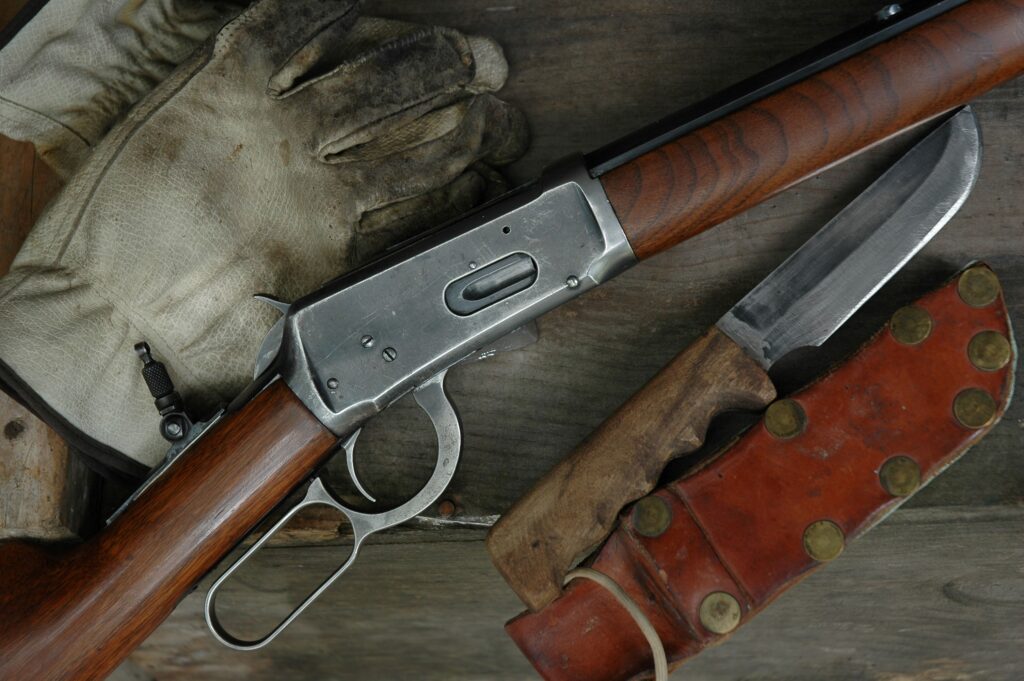
An early smokeless cartridge, the .30-30 is loaded to 42,000 psi, manageable in
Winchester’s 1894 rifle
Platoons of bright people pondered ways to measure gas pressure until, in the mid-1800s, Alfred Nobel and an American named Rodman hit upon different methods at the same time. Rodman’s is still in use. (It’s a factory procedure not easily or safely performed in your garage!) A small cylindrical piston is slid into a hole in the barrel of a test gun, and a copper or lead pellet is inserted snugly between the top of the piston and a stationary anvil – all this in a firmly anchored fixture. Upon firing, gas shoves the piston against the pellet, compressing it. Math converts “before” and “after” pellet lengths into copper units of pressure or lead units of pressure (CUP, LUP). Given its role in this drama, the pellet is called a crusher. Traditionally, copper crushers are either .146 in diameter and .400 long to start, or .225 in diameter and .500 long. The choice depends on application. Copper crushers work best for modern centerfire rifles and handguns. Lead crushers (.325 x .500) best register the low-pressure loads in rimfire, shotgun and black-powder cartridge loads, though small-diameter copper crushers can be used too. Crushers are calibrated in a test press. Pressure figures yield “Tarage Tables.” Technicians can then determine chamber pressures tested with a similar crusher.
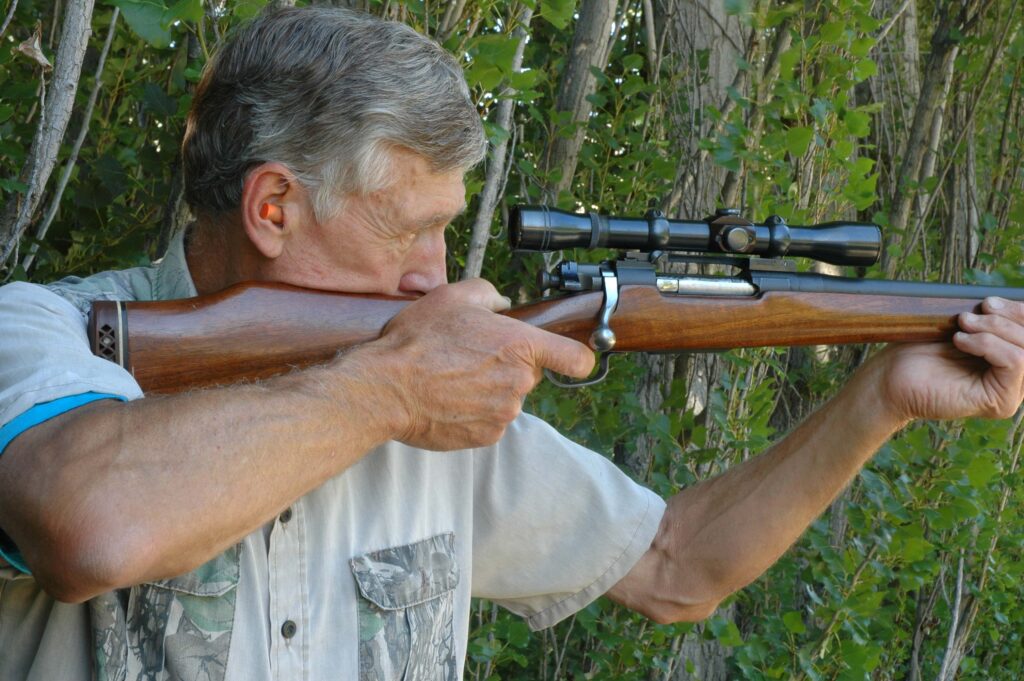
Handloading for this 03A3 Springfield in .30 Gibbs, Wayne keeps .30-06 pressure (60,000 psi) in mind.
Crushers don’t tell the whole story, though. They can’t register peak pressure accurately because change in pellet dimensions is slower than the change of pressure in the chamber. Also, the moving piston must be brought to a halt, which skews a reading in the opposite direction. There’s no balancing out, just conflicting forces. CUPs and LUPs are not the same; nor can they be interchanged or converted easily to the common English unit of pressure, pounds per square inch (PSI).
The plot thickens. When CUP was the only standard measure of small arms ammunition world-wide, I’m told the fixtures (thus methods) in British, American and German labs differed!

The .308 operates at 62,000 psi, nearly as high as belted magnums; and it was designed for autoloaders!
Piezoelectric measure to the rescue. The discovery of piezoelectric effect by Pierre Curie came in the 1880s. To sum, he found that pressure deforming a metal disc emits an electrical charge. Further work showed the voltage proportional to the strain. By the 1960s, transducers had been developed to measure that voltage. These were applied in the medical, automobile and aerospace fields, as well as to ballistics. A piezoelectric transducer in a test-barrel chamber registers deflection of the case wall, and pressure on a crystal, in PSI. Conformal transducers are installed in the barrel and become part of it. External versions can be mounted on the barrel and removed. Piezoelectric measurement is a faster, cheaper and less labor-intensive method than the crusher system. It also records peak pressures.

Targets and a chronograph tell you how your loads perform, but not how much pressure they generate!
Shooters denied labs and test barrels can measure pressure with a strain gauge. Developed for the consumer market by chronograph guru Ken Oehler, it’s essentially a piece of wire you glue to the outside of your chamber wall. Upon firing, the chamber expands, stretching the wire. Its length is then compared with a previous measure to get a number that translates into pressure. This reading does not equate with any from a crusher or piezoelectric gauge.
The naked truth is, few handloaders measure pressure. But smart handloaders come up with safe ammunition that’s powerful and accurate without shredding rifles or losing parts of their faces. They do so by collecting loading manuals published by powder and bullet companies, and by cross-referencing the data there-in. They work up loads gradually, minding signals from their rifles and cartridge cases that hint of pressures reaching the lid.
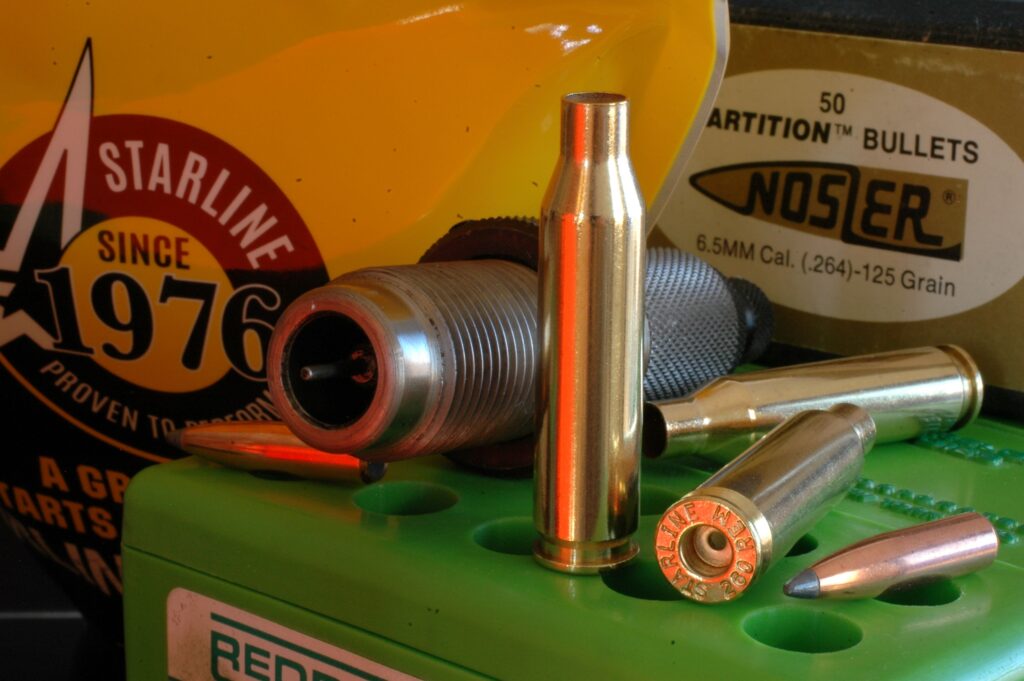
New brass is most elastic. Work-hardened brass can make case head expansion measures misleading.
A hard bolt lift tells you the case has been thrust so hard against the chamber and bolt head that it has failed to “spring back” for easy extraction.
A shiny spot on a case head is where the brass has been shoved back into the ejector hole or slot. Rotating the bolt scuffs that protrusion. Any “smearing” of the headstamp is likewise a danger sign.
A cratered or extruded primer – a protruding rim around the firing pin indent – may indicate high
pressure. It can also occur if the firing-pin hole is oversize. Check by firing a mild or factory load.
A flattened primer – one whose edges have lost their radius and have been “ironed out” to meet the face of the case head – indicates pressure is too high. Some primers are more pliable than others; thin-walled cups may show a slight change in radius within acceptable pressure limits. A blown primer, one rattling about in the rifle action as you open the bolt, shows the load was very hot or the case had earlier fired loads that expanded the primer pocket.
Some changes in cases observed after firing are mistakenly taken as signs of high pressure.
Smoke smears near the case mouth actually indicate low pressure, as there was not enough to seal the neck against the chamber wall to prevent blow-back.
A protruding primer – one backed slightly out of the case but with no flattening or charring at the edges – is evidence the charge was not strong enough to press the case firmly against the bolt head.
A cracked case – lengthwise at neck or shoulder, and around the hull just forward of the web – is most often a result of brass fatigue: too many workings and firings. High pressure hurries such failure.

Given over 100 powders, several should make any cartridge perform well without
excessive pressure.
You can track pressures by measuring case head expansion – preferably with a micrometer that delivers accurate readings to the fourth decimal – .0001. A blade micrometer is best for belted magnums, which you measure just ahead of the belt. On rimmed and rimless cases, place the micrometer jaws at the same place. I typically measure .1 forward of the front edge of the extractor groove. The important thing is to measure at exactly the same place before and after, even to the extent of rotating the case to the same position in the micrometer. Measuring to the ten-thousandth, method matters!
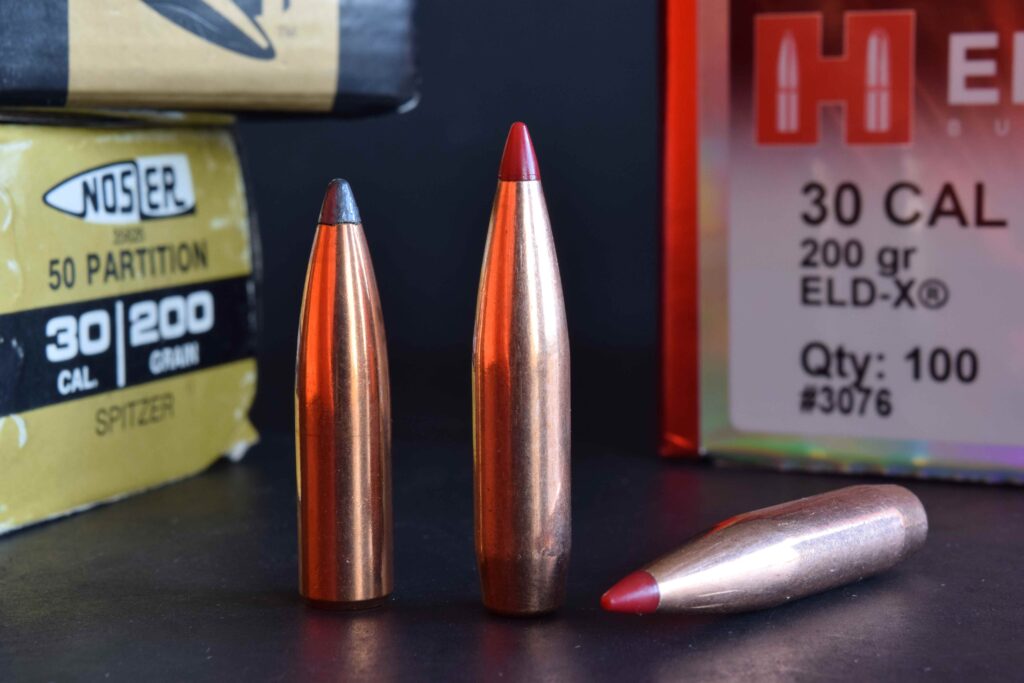
Bullet weight isn’t a variable here. Material, length bearing surface can affect pressure, also accuracy.
How much head expansion is too much depends on what you read. One respected source advises keeping average expansion to .0003, with no reading over .0005. Such a result tells you pressure is not exceeding 50,000 CUP. As cartridges are loaded to different pressures, acceptable measures can differ. A lab of long standing expects head expansion of .0003 to .0004 on .30-30 cases, .0004 to .0005 on .223s, .0005 to .0006 on the .308 and .270, .0006 to .0007 on the .300 Winchester and similar belted magnums.
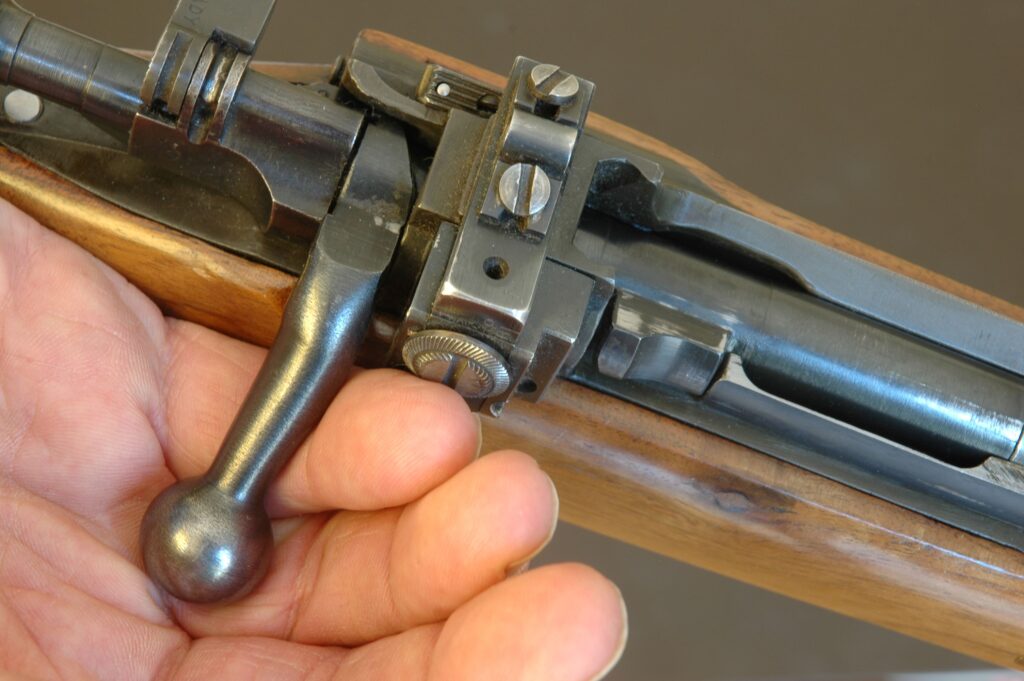
A stiff bolt lift often signals high pressure. Check case length, seating depth. Reduce the powder charge.

The blown primer and shiny ejector mark show pressures were exceedingly high. Don’t use this load!
Cases from different sources can differ, dimensionally and in hardness. Thus, for any given level of pressure, expansion readings can differ, one source to the next. You’re smart to “batch” cases.
Head expansion is reliable only on new or once-fired, full-length-sized cases. Re-sizing and firing “work-hardens” brass. Lab tests have shown that multiple cycles through a rifle and dies can leave cases so hard they don’t respond to pressure as high as 80,000 psi – until they fail catastrophically.
To keep pressures within a safe, useful range, you’ll mind variables that affect it. Among them:
The rifle’s throat. If it is shorter than standard, a bullet can’t move far if at all as pressure builds behind it. As an automobile begs a harder push to nudge it from a standstill than to keep it rolling, so the force required to pop a bullet free is greater than that needed to accelerate it through the throat. But if it meets rifling the instant gas is trying to wrest it from the case’s grip, a pressure spike may occur. I have a rifle chambered for .300 Weatherby handloads only, with a short throat for fine accuracy. Weatherby has historically cut generous throats in its barrels so bullets could be driven fast but still safely from ambitious loads. Weatherby factory ammo may thus be a tad warm for my barrel.
Seating depth. Bullets seated out can enhance accuracy by limiting the jump from case to rifling. But pressures climb when they can’t get a “running start.” On the other hand, bullets seated out boost case capacity, which drops pressure unless you add powder to make use of it.
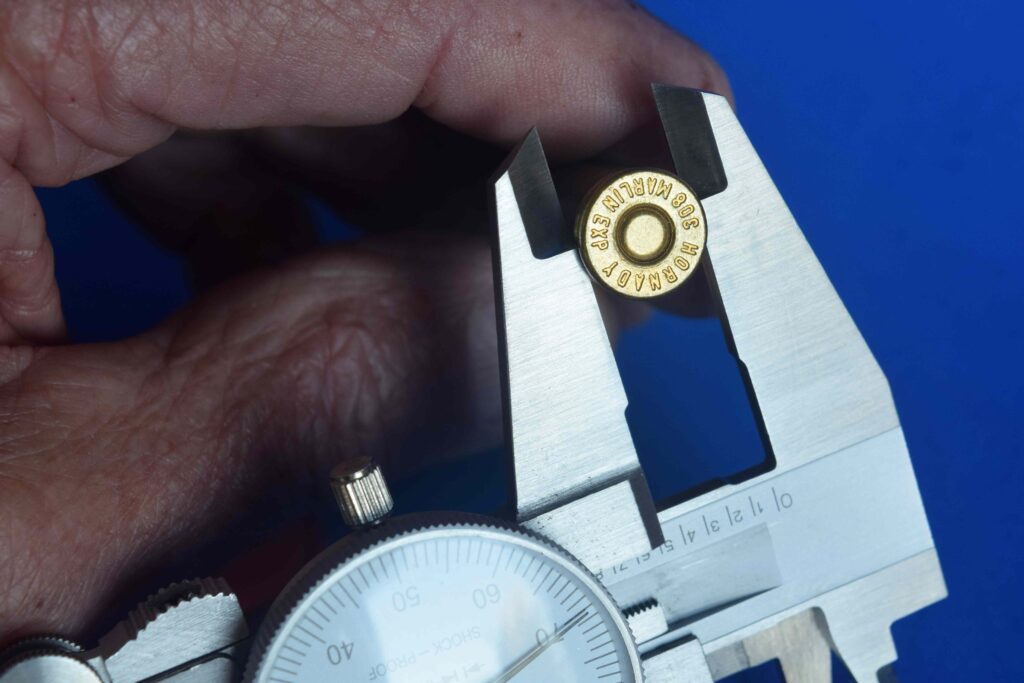
Measure head expansion just in front of the extractor groove. Any value higher than .001 is excessive.
Case length. Firing stretches brass; resizing doesn’t bring it to original length. Trimming may be necessary to keep case mouths shy of the chamber mouth. A case too long jams against the end of the chamber, crimping the bullet as you lock the bolt into battery, and impeding easy bullet release.
Reduced charges. Stay with loads recommended in manuals. Approach light loads as cautiously as you would maximum charges. Light charges of slow powders in big cases have caused catastrophic detonations. Explanations vary. For reduced loads, consider using powders in the middle of useful burn rates, with filler.
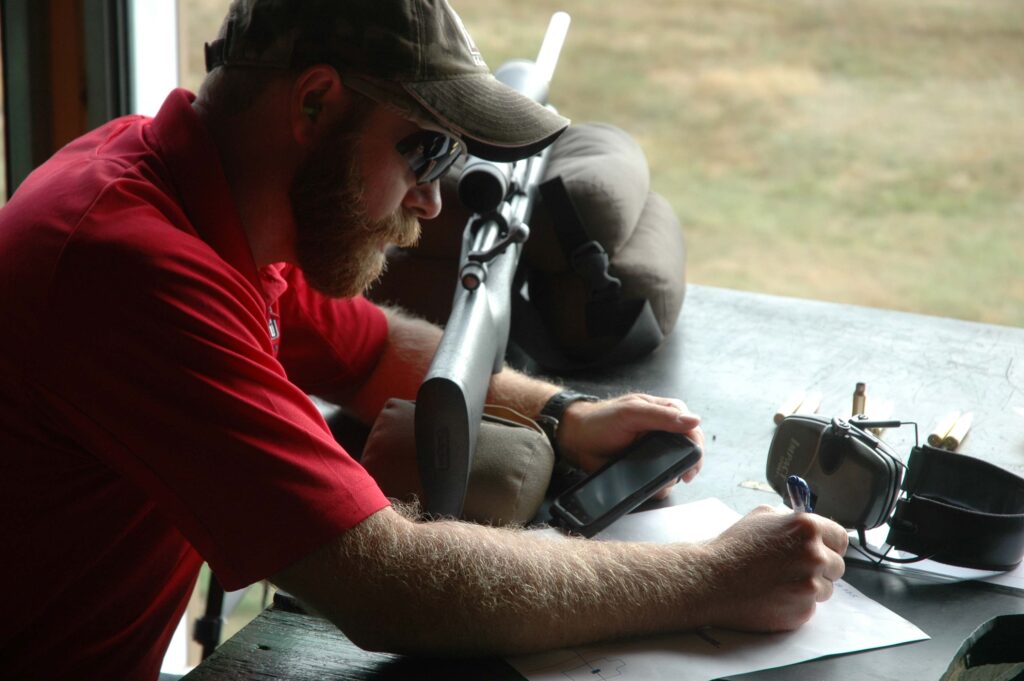
Note pressure signs on fired cases as you record velocities, group sizes. Do it on site. Memory fails!
There’s a lot more to know about pressure. The people who provide you with handloading tools and components, like Midsouth Shooters’ Supply, can answer most of your questions.
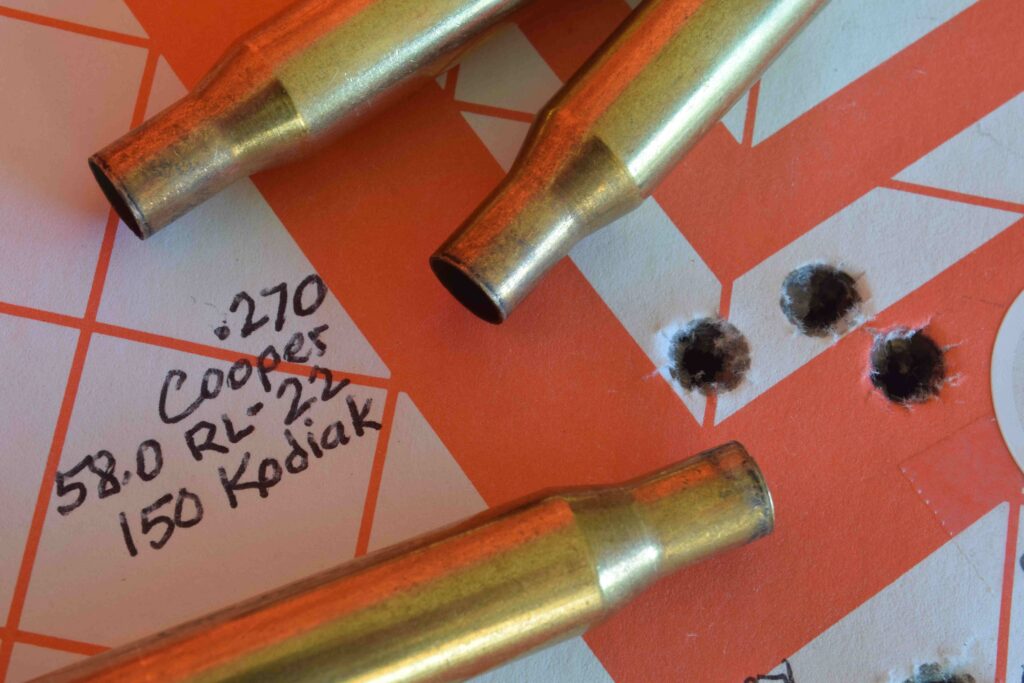
This promises to be an excellent elk load: Tight group, velocity at 2,940 fps, no sign of high pressure.

Fine accuracy? Not important here. But your rifle must cycle. Pressure that makes it fail can be fatal.
Sidebar: Pressure conversions
CUP values may match up with PSI numbers, but only, it seems, by chance. The Sporting Arms and Ammunition Manufacturers Institute (SAAMI) lists maximum average pressure (MAP) for the .45-70 at 28,000 CUP – and at 28,000 PSI. Perversely, MAP for the .243 is 52,000 CUP and 60,000 PSI. For the .308 the numbers are 52,000 CUP and 62,000 PSI. The .30-30 is listed at 38,000 CUP and 42,000 PSI.
Look hard, and you may find a formula to convert CUP values to PSI. But I’m aware of none that works at all pressure levels. Denton Bramwell published one that held for crusher pressures from 28,000 to 54,000 CUP: Piezo value (PSI) = 1.52 x the crusher reading (CUP) -18,000.
SAAMI’s European counterpart is CIP (translated: Permanent International Commission for the Proof of Small Arms). Its crusher readings are in multiples of 50 bars. Piezo value (PSI) = 1.21 x the crusher reading – 2.8.







